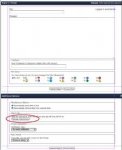This has been a very interesting read, especially coming from a mere printing machinist in Australia. I will award points to either side, but feel that i am well under qualified to name a victor!!

All of you gentlemen have a very firm grasp on the theory of printing, my only question is do any of you have any practical knowledge as such? Over the years i have had some very interesting, and often heated discussion with (generally) pre-press operaters, or production managers, over what can and cant be done on a printing press. This generally relates to jobs that are set up in such a way that they will be impossible to run, and some of these people tend to refuse to think outside the box, and believe that time saved is money earned, and this can conflict with my "do it once, do it properly" tendancies.
These "discussions" tend to result from a clash between practical knowledge gained over a lifetime of working on and around printing presses, and knowledge gained from reading on the net or perhaps "Australian Printer" magazine or some other such publication.
I for one would be very interested to see a proven demonstration of Erik's ITB. As it stands, keeping density stable on a job be it short run, long run, heavily inked or a very light take off run is NOT a problem. Experience teaches you how a press will respond to any given variable, be it roller or ambient temp, be it press speeds or press/roller condition, or any other variable you could mention.
One question for you Erik: whilst i am sure the ITB combined with closed loop tech etc will be able to keep density consistent throughout a press run, i am sure there are other variables that the ITB cannot control that only a pressman can sort out. For example, marking or perhaps spray powder build up on a back up that wont effect solid density but definately will have an effect on screens and half tones. (granted, on a single pass perfector this wont be an issue).
These things are simply part of my day as a printer, another issue to be noted and dealt with as per normal. As is density control. In general, a printer
responds to density changes by adjusting the sweep or profile. But in the real world, a good printer
knows it is going to change, however minutely, and
pre-empts the change to keep it perfect, all day...every day.
So thank you for the above discussion gentlemen, and my thoughts are if you would like some insight into making printing better/more productive/easier etc... talk to the men who are on the presses, getting their hands dirty, who have a practical, if unorthodox understanding of the entirety of the print process. I feel that even Cal Poly could benefit from having some old school and new school printers to help "teach the teachers"












